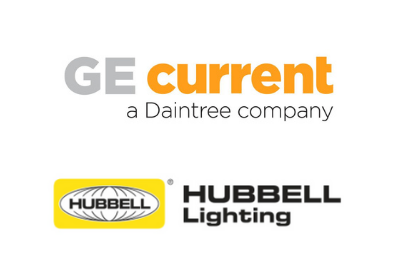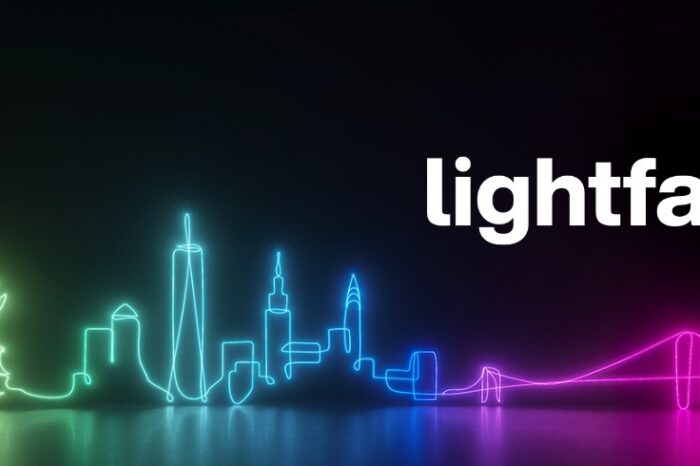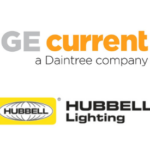GE Current Adds $515M in Sales with Hubbell Lighting

Last week GE Current announced that it acquired the Hubbell’s C&I group (which means, “no Progress Lighting, which was previously separated from the division).
GE Current shared a press release stating “GE Current, a Daintree company, has entered into a definitive agreement with Hubbell Inc. to acquire Hubbell’s Commercial & Industrial Lighting business for $350 million cash. In addition to expanding Current’s product range, the move broadens its distribution footprint and digital tools to service customers quickly and efficiently. Hubbell’s Commercial & Industrial Lighting division reported sales of $515 million in 2020.
The Hubbell brands involved include Architectural Area Lighting, Beacon, Litecontrol, Kim, Columbia, Prescolite, Aclara, Dual-Lite, Compass, Hubbell Outdoor Lighting, and Hubbell Control Solutions.
There are no planned changes to each company’s lighting agency networks, which will continue to operate separately with dedicated resources and distinct brands.
“Today’s announcement is a win for the industry, combining two leading companies with over 150 years of innovation. We intend to use our combined resources to drive new investments that create solutions for the continuously evolving needs of our customers,” said Manish Bhandari, CEO, Current. “The values and customer-centric culture of the Hubbell C&I lighting business are well-aligned with Current. We look forward to welcoming the Hubbell C&I team.”
Together, the two businesses’ product and controls portfolios will be positioned to capture growth driven by continued conversion to LED and demand for connected light controls systems through the diversified go-to-market channels.
Closing is expected to take place in the first quarter of 2022, subject to regulatory approvals and other customary conditions.”
Hubbell then shared a press release stating “Hubbell Incorporated (NYSE: HUBB) today announced the execution of a definitive agreement to sell its Commercial and Industrial Lighting business to GE Current, a Daintree company, for a cash purchase price of $350 million, subject to customary adjustments with respect to working capital and net indebtedness. The business designs, manufactures and sells LED lighting and control solutions for commercial and industrial customers and generated approximately $515 million in sales in 2020.
“This strategic transaction creates a more focused Hubbell portfolio with higher growth and margin characteristics, and enables us to continue effectively executing on our core strategy of providing reliable and efficient critical infrastructure solutions for Electrical and Utility applications,” said Gerben Bakker, Chairman, President and Chief Executive Officer. “We are confident that Current is the right strategic partner for the business, and that the combination of these two leading businesses with complementary product portfolios will be a win for customers, channel partners, employees and shareholders.”
While it wasn’t a surprise that Hubbell Lighting was sold as it was rumored for sale for a number of years, the timing took people a little by surprise (for no real reason) and perhaps it wasn’t a surprise that GE Current purchased Hubbell Lighting given that it is owned by a private equity firm (American Industrial Partners) and hence has access to capital.
According to those we’ve spoken with over the past week (and it was convenient that LightFair was the next day to gather some reaction):
- The purchase price was a fair price, perhaps a good deal for GE Current. While it represents 68% of sales, which is sometimes considered “low” for a manufacturer, input was that it was 7-8x EBIT and that, given that Hubbell Lighting imports / rebrands a “significant” percent of its products, it is viewed more as a master distributor.
- GE Current reportedly has access to the Hubbell Lighting name for 16 months, after that the division would need to change its name … or perhaps the brands are reconfigured into a different offering / approach to the market.
- The product lines for the two companies are considered relatively compatible, with little overlap.
- Hubbell Controls and Daintree are compatible and result in a more complete controls offering. Hubbell Controls is viewed as a good hard-wired line whereas Daintree is a quality wireless line. This could be a challenge for agents of either company that represent Wattstopper.
- Given that the lighting industry has lagged the overall electrical industry sales performance in 2021, many expected there to be more lighting consolidation by now.
Some takeaways
- One distributor commented that they were “Not at all surprised it’s sold, but am surprised who it was sold to. Kevin Poyck leaving was a signal this was coming, perhaps.” it was felt that the current management team was there to “pretty up” the company and improve profitability.
- There is a sense that GE Current needed to do something as lighting is about either scale or focus. Interviews on Edison Report with GE Current confirm that they recognized this issue. There are now three lighting companies that are, essentially, $1+ billion companies. Scale is needed to support product development as well as sourcing / contract manufacturing as well as the supply chain issues and forecasting.
- According to the same interviews on Edison Report, GE Current is “not done” with acquisitions, but, realistically, it may take some time to digest Hubbell Lighting.
- GE Current states there will be two sales organizations longer term. In reality, there could be more as GE Current already manages multiple sales groups in a region based upon the end-user or product category. The spec lines could go to a different agency or perhaps there are other configurations.
- Reps commented that Hubbell Lighting was challenged in competing with Acuity as Hubbell’s brand management strategy created separate profit centers that could compete for elements of a project whereas Acuity uses more of a blended margin management approach … focused on capturing the sale vs brands competing for “their slice of the profits.” This is a difference in management philosophy and a traditional Achilles heal for companies with a multiple-brand management strategy. Breaking down silos is key to winning and growing.
Questions
So, what is next? It’s all supposition for right now as the deal doesn’t close till the end of the year so neither company can publicly say much.
Thoughts and questions…
- What’s AIP’s long-term game? Presumably they track Acuity’s stock price daily. Possibly an IPO at some point? Perhaps sell to another private equity firm?
- From a personnel viewpoint, it is assumed there is significant overlap but, not knowing the structure of the final company, tough to say how many chairs will need to be filled in the end. GE Current has said it will be keeping its Hendersonville location, where they have invested in a new Institute, as well as Hubbell Lighting’s Greenville headquarters.
- But, with deals of this size, there inevitably will be some role overlap and GE Current will identify some cost synergies.
- What will Hubbell do with the extra $350M? Will they spend it on an electrical company that will complement one of its other divisions? Hubbell had four platforms – Data Communications, Electrical & Electronic, Lighting & Controls and Power & Utilities. Assume Progress Lighting is sold (why keep only a residentially-oriented lighting company that is sold through distribution and retailers that imports much, if not all, of its offering?) So Hubbell then has 3 platforms to spend $350M on (plus whatever it wants to spend from cash flow.) The money could go to shareholders, but … who knows.
- Whatever Hubbell buys will have high margins to fit its culture. This leads to more of an industrially-oriented company or possibly something to complement its utility business given the stability of that industry, focus on climate technologies and proposed government driven (or mandated) utility investments.
- Some think that AIP, or GE Current, may seek to replicate the Signify strategy of Philips Lighting and Cooper Lighting Solutions … a dual brand strategy? The questions then become “does the market think this is successful?” and “Is imitation the right strategy for GE Current?”
- Could this start an acquisition spree of lighting companies? There are now 3 large companies. Perhaps 4-8 companies in the $350-700M range (and some of these are holding companies for multiple brands), many that are in the $100-250M range and then “lots” below $100M. There is room for those who focus (based upon market segment, product category or have a value proposition that is clear to its target audience and are strong marketers.) And there are some private equity firms poking around. Don’t be surprised to see Leviton and Legrand further expand their lighting offerings.
- A lighting consultant shared “LedVance now must be under tremendous pressure to do what Signify & GE did. However, the only original top 3 fixture maker left is Acuity and that’s too big for LedVance to acquire. I guess my prediction is that LedVance will have to settle and acquire a major Tier 2 fixture maker, like LSI, MaxLite, or RAB.” LSI is owned by a private equity firm and is diversified into the signage business. (and isn’t it interesting that the lamp companies from yesteryear are all now competing for fixture business, albeit with significantly different approaches and paths for getting here?)
- Since both companies were part of the marketing groups, will the marketing groups want to bring in some of the others that they have avoided to create more competition or will they close ranks on the top branded companies to support them?
For Discussion
- Distributors – does this change how you view your lighting linecard?
- Reps / Lighting agents – if you carry one of these lines, what do you see as the impact, especially since decisions probably won’t be made till mid-next year?
- Who are the next lighting companies that you think will be sold? Who should be sold?




















